Water seepage and flooding is a nightmare for any homeowner. Apart from making the house unusable, floods will certainly ruin your personal belongings. On top of that, it’s a serious health and safety hazard and thus you need to have the problem dealt with immediately.
With the coming of warmer temperature in the summer, this is a common problem that a good number of homeowners in Australia have to deal with. But most homeowners have no idea on how to deal with this problem.
Main Causes of Flooding and Water Seepage
In this article, we’ll identify the primary cause of water seepage and flooding and how to address them.
Plumbing Leaks
This is one of the main causes of water seeping from the walls. As the plumbing pipes run through the wall, any leak or a burst pipe will cause the water to flow through them. A leaking water tank or a broken hose for your washing machine could also be the reason why the house is flooding. Most of the water seepage is due to the aging of the plumbing system.
Leaking Windows
This is one of the most ignored causes of flooding, especially in the basement. If the windows are improperly installed, they can allow water into the house. For instance, if the window wells fill with water, there is a high likelihood of water flooding the room. Therefore, you need to check the condition that the window is in.
How To Manage Water Seepage And Flooding
There are different ways through which you can prevent water seepage and flooding but it’s mostly dependent on the cause. Here are simple ways of handling these problems:
Replace the Old Plumbing System
If your plumbing system is decades old and mostly done with metallic pipes, then you need to have it replaced when you notice water seepage. Plumbing maintenance and replacement is a must. You can start with the affected part and then change the entire system with time. For the metallic pipes, they are easily affected by corrosion, and you should at least replace them with plastic (PVC) pipes.
Gutter and Downspouts
Dirty gutters and downspouts are two of the key causes of flooding. You need to make sure that you have them cleaned before the heavy rain to ensure proper collection of water into the drain. Make drain cleaning a habit to ensure that they’re in good condition. If flooding has already occurred, you need to check their condition to ensure that they are cleaned.
Remove Snow
This is another notorious cause of water flooding and seepage. If snow surrounds your house, you should have it removed as the warm season approaches. If the snow on the walls starts to melt, there is a fair chance of experiencing water seepage. Make sure that the snow is shoveled few feet away from your home. Also, make sure that you have directed water away from the house.
Use Window Well Guards
Being a primary cause of water seepage and floods, window wells should be checked. By using window well guards, you can reduce the amount of water forming around this place significantly. This will reduce the possibility of seepage and floods.
Source: Causes And How To Manage Water Seepage And Flooding
Name: LJM Plumbing, Gas & Drainage
Address: Brendale Business Centre, 48/193 South Pine Road, Brendale QLD 4500
Phone: 0412 267 000
Website: https://ljmplumbing.com.au/
Address: Brendale Business Centre, 48/193 South Pine Road, Brendale QLD 4500
Phone: 0412 267 000
Website: https://ljmplumbing.com.au/
 The reason why water tastes or smells bad is due to the numerous minerals and chemicals such as chlorine and other contaminants. Some of these contaminants include the bacteria that are mostly responsible for the bad smell. A water filter is able to remove all the bacteria causing smells in the water and also other chemicals including chlorine for better-tasting and better-smelling water. Also, remember that most piping systems, such as metal pipes, corrode to produce rust that changes the smell and taste of the water. These are some of the problems that a good water filter will address.
The reason why water tastes or smells bad is due to the numerous minerals and chemicals such as chlorine and other contaminants. Some of these contaminants include the bacteria that are mostly responsible for the bad smell. A water filter is able to remove all the bacteria causing smells in the water and also other chemicals including chlorine for better-tasting and better-smelling water. Also, remember that most piping systems, such as metal pipes, corrode to produce rust that changes the smell and taste of the water. These are some of the problems that a good water filter will address. By taking filtered water, it protects your body from dangerous chemicals and pathogens, and this is what leads to better overall health. By removing all contaminants in the water, your body will not be exposed to the major health risks that it is with tap water. Filtered water also works best for the children who need clean water for proper growth. Do not trust the bottled water with your children since not all of it is up to the standards.
By taking filtered water, it protects your body from dangerous chemicals and pathogens, and this is what leads to better overall health. By removing all contaminants in the water, your body will not be exposed to the major health risks that it is with tap water. Filtered water also works best for the children who need clean water for proper growth. Do not trust the bottled water with your children since not all of it is up to the standards.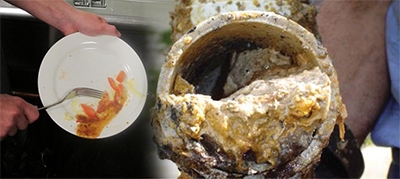 This is a major cause of clogged drains but also the easiest to prevent. Fatty and grease material mostly comes from the food residues and soaps that are washed down the drain. As the dirty water goes down the drain, the fatty and greasy matter solidifies, and due to their sticky properties, they collect to the walls of the pipe to form a mortar that’s difficult to remove. Draining hot water or mild homemade drain cleaner regularly can help in preventing drain clogs.
This is a major cause of clogged drains but also the easiest to prevent. Fatty and grease material mostly comes from the food residues and soaps that are washed down the drain. As the dirty water goes down the drain, the fatty and greasy matter solidifies, and due to their sticky properties, they collect to the walls of the pipe to form a mortar that’s difficult to remove. Draining hot water or mild homemade drain cleaner regularly can help in preventing drain clogs.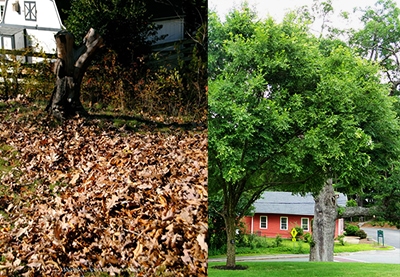 If you have trees in your compound and mostly along the sewer line, then you are like to experience blocked drains pretty regularly. First, falling leaves (mostly during the autumn) are washed down the drain and can cause a buildup in the sewer line and this will definitely result to a clog. The second and most tough to deal with are the tree roots in the drain. Tree roots may get into your drain by cracking the pipe in search of moisture. Flushing down chemicals that kill tree roots is one of the best ways to prevent their growth into the pipe.
If you have trees in your compound and mostly along the sewer line, then you are like to experience blocked drains pretty regularly. First, falling leaves (mostly during the autumn) are washed down the drain and can cause a buildup in the sewer line and this will definitely result to a clog. The second and most tough to deal with are the tree roots in the drain. Tree roots may get into your drain by cracking the pipe in search of moisture. Flushing down chemicals that kill tree roots is one of the best ways to prevent their growth into the pipe.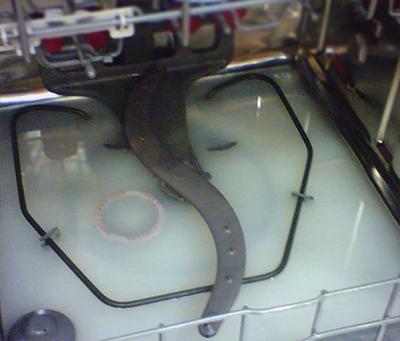 This is one of the common and frustrating problems with any dishwasher. If your dishwasher is not draining properly, you’ll notice a small pool of water in the bottom after every cycle. If you leave it for some time, the water will drain slowly drain away. The problem is mainly caused by the clogging of the filters in the machine. Note that filters are located at the base of the machine, and you need a professional plumber to clean them out. Regular cleaning of the appliance with mild homemade cleaners can help to keep these filters free of debris. If filters are not the problem, check for a blocked hosepipe. Just disconnect the hosepipe and blow through it to clear any clogs in it.
This is one of the common and frustrating problems with any dishwasher. If your dishwasher is not draining properly, you’ll notice a small pool of water in the bottom after every cycle. If you leave it for some time, the water will drain slowly drain away. The problem is mainly caused by the clogging of the filters in the machine. Note that filters are located at the base of the machine, and you need a professional plumber to clean them out. Regular cleaning of the appliance with mild homemade cleaners can help to keep these filters free of debris. If filters are not the problem, check for a blocked hosepipe. Just disconnect the hosepipe and blow through it to clear any clogs in it.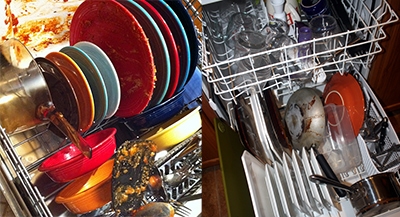 This is one of the most frustrating dishwasher plumbing problems that needs plumbing maintenance right away. It occurs when the unit refuses to fill with the water. This makes it impossible to clean the dishes thoroughly. Many factors could lead to this problem. The settings of the machine are one of the potential causes. The first thing you should check is whether the anti-flooding protection on your machine is activated. If that’s not the case, you should check if there is a blockage between the water pump and the dishwasher. If the problem is not seen in these two areas, then you should call a professional plumber to fix the problem.
This is one of the most frustrating dishwasher plumbing problems that needs plumbing maintenance right away. It occurs when the unit refuses to fill with the water. This makes it impossible to clean the dishes thoroughly. Many factors could lead to this problem. The settings of the machine are one of the potential causes. The first thing you should check is whether the anti-flooding protection on your machine is activated. If that’s not the case, you should check if there is a blockage between the water pump and the dishwasher. If the problem is not seen in these two areas, then you should call a professional plumber to fix the problem.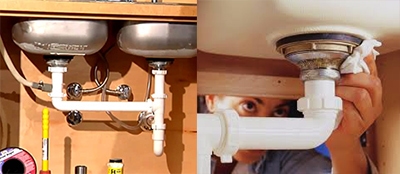 This is another area in your home that you need to check for leaks. The cause of the leaks in this part of the sink is mostly a faulty or loose trap. If there is any moisture while the water is running through the sink tap, you need to tighten it or replace it with a new one.
This is another area in your home that you need to check for leaks. The cause of the leaks in this part of the sink is mostly a faulty or loose trap. If there is any moisture while the water is running through the sink tap, you need to tighten it or replace it with a new one.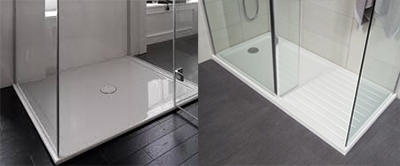 Shower tray leaks are some of the most difficult to notice but are also a major source of water leaks. There are various ways you can go about to check for these leaks. If you live in a storied building, you can check the ceiling underneath the shower waste for dampness. If your house is on ground level, check the immediate walls for dampness.
Shower tray leaks are some of the most difficult to notice but are also a major source of water leaks. There are various ways you can go about to check for these leaks. If you live in a storied building, you can check the ceiling underneath the shower waste for dampness. If your house is on ground level, check the immediate walls for dampness.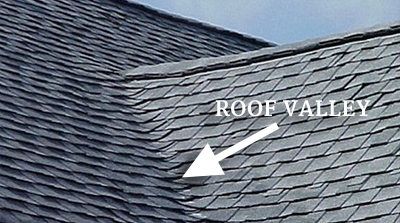 A
A  The flashing are pieces of thin metal installed on the roof joints and under the shingles to offer a water-resistant barrier. Broken flashing creates large cracks. Cracking of the flashing will probably occur from the corrosion of the tar used to seal them leaving them exposed to elements like wind and rain that cause the cracks. The problem is fixed by replacing the old flashing under the shingles with a new one.
The flashing are pieces of thin metal installed on the roof joints and under the shingles to offer a water-resistant barrier. Broken flashing creates large cracks. Cracking of the flashing will probably occur from the corrosion of the tar used to seal them leaving them exposed to elements like wind and rain that cause the cracks. The problem is fixed by replacing the old flashing under the shingles with a new one. Sewer backups occur at the lowest open drain and are usually caused by a blockage in the sewer line. For a well-maintained sewer line, there should be no regular sewer backups. However, sometimes you can experience blockages even if you are cleaning your drainage system. This is a clear symptom of a damaged sewer line and should be attended to immediately. It could have been caused by tree root intrusion, misaligned pipe connections or cracks allowing an inflow of soil among other issues.
Sewer backups occur at the lowest open drain and are usually caused by a blockage in the sewer line. For a well-maintained sewer line, there should be no regular sewer backups. However, sometimes you can experience blockages even if you are cleaning your drainage system. This is a clear symptom of a damaged sewer line and should be attended to immediately. It could have been caused by tree root intrusion, misaligned pipe connections or cracks allowing an inflow of soil among other issues.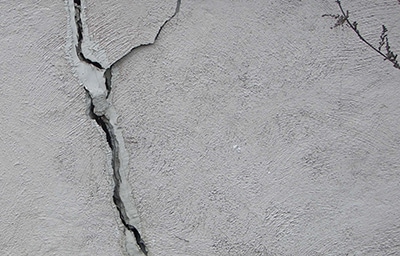 When a breakage occurs in a drainage pipe, the soil over it starts to get into it slowly. With time, you will find the lawn around the area where the broken pipe passes developing indentation.
When a breakage occurs in a drainage pipe, the soil over it starts to get into it slowly. With time, you will find the lawn around the area where the broken pipe passes developing indentation.